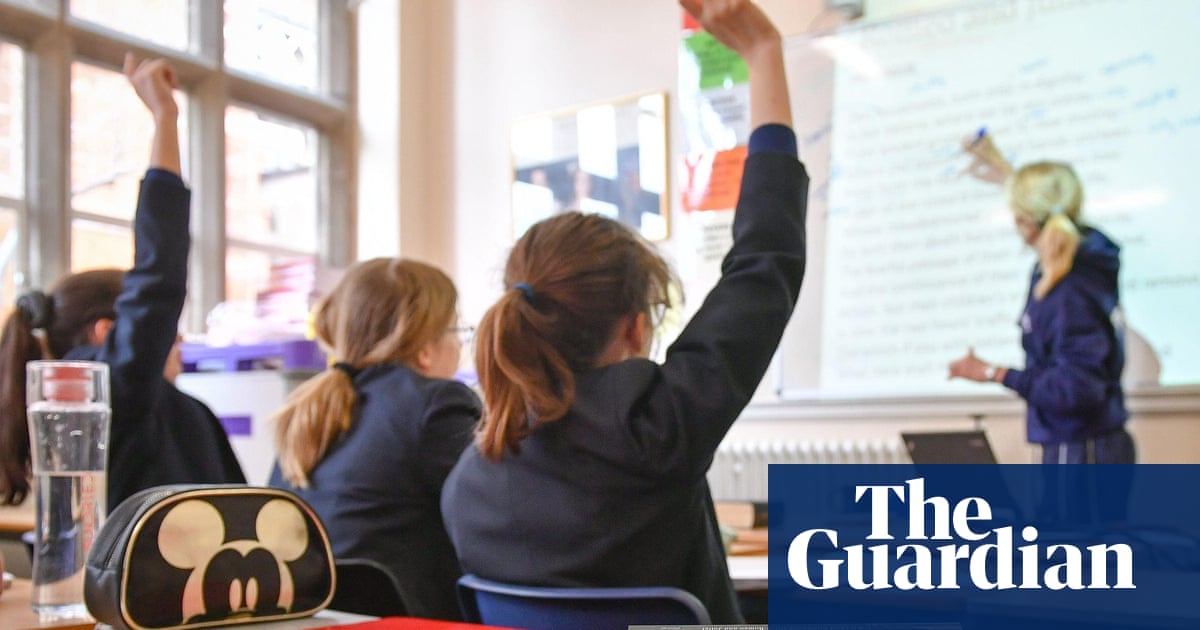
The attainment gap between 16-year-olds from low-income families and their wealthier classmates has grown across all regions of England since before the pandemic with the exception of London, research has found.
Disadvantaged pupils are now more than 19 months behind their peers by the time they sit their GCSEs, with the gap having increased at every stage of their schooling aged five, 11 and 16, according to the Education Policy Institute (EPI) thinktank.
The report compared the educational attainment of disadvantaged and non-disadvantaged pupils between 2019 and 2023. It found that disadvantaged pupils in London continued to have higher attainment than anywhere else in England.
Across England, those described as persistently disadvantaged – pupils eligible for free school meals for at least 80% of their time in school – are even further behind their wealthier peers with a gap of two years by the age 16.
Paul Whiteman, the general secretary of the NAHT school leaders’ union, described it as “a national tragedy”. Russell Hobby, CEO of the Teach First education charity, said: “These findings make for devastating reading. Beyond these figures are real children, who despite being born with the same potential as their wealthier peers, are unfairly held back by unequal opportunities.”
At primary and secondary level, the gap has grown by a month. The disadvantage gap for 16- to 19-year-olds is unchanged compared with 2019, leaving disadvantaged students still more than three grades behind their peers.
While the attainment gap among older pupils with special educational needs and disabilities (Send) has narrowed since 2019, it has grown among reception-age pupils to its widest on record for children in need of support and those with the additional protection of education, health and care plans.
The EPI research found that although girls are still outperforming boys at every educational phase, there has been a narrowing of the gender gap. Girls are 4.5 months ahead of boys at 16, down from 6.3 months in 2019. The EPI says boys’ attainment has improved and girls’ has fallen.
Natalie Perera, the chief executive of EPI, said that after examinations and grades largely returned to pre-pandemic norms in 2023, the report provided the first comprehensive, post-pandemic assessment of the disadvantage gap.
“If the new government is to make real progress in tackling these inequalities it must adopt evidence-based policies and interventions with urgency. These should include higher levels of funding targeted towards disadvantaged pupils and a cross-government child poverty strategy to tackle the root causes of educational inequalities.”
Emily Hunt, the EPI’s associate director for social mobility and vulnerable learners, said: “That gaps at age five are widening across disadvantaged and vulnerable groups – as well as being at record levels for children with Send highlights the scale and breadth of challenges facing schools and the importance of the earliest years of life.”
after newsletter promotion
Separately, a YouGov survey for Unicef UK found that 87% of parents with children under five said they were worried about their children’s life chances.
The poll of almost 3,000 parents found that 38% dreaded the holidays because of the financial strain and a quarter have had to borrow to pay for the essentials. Two-thirds said the cost of living crisis had negatively affected their family, and 63% reported struggling with their mental health as a parent.
Joanna Rea, Unicef UK’s director of advocacy, said: “Our findings show that families across the country are really struggling. The new government must immediately prioritise support for its youngest and most vulnerable citizens, starting with ending the two-child limit policy and removing the benefit cap.”
The Department for Education was approached for comment.
Source: theguardian.com


















